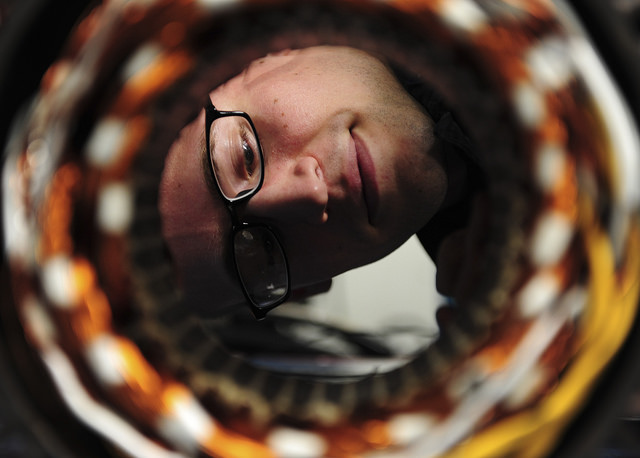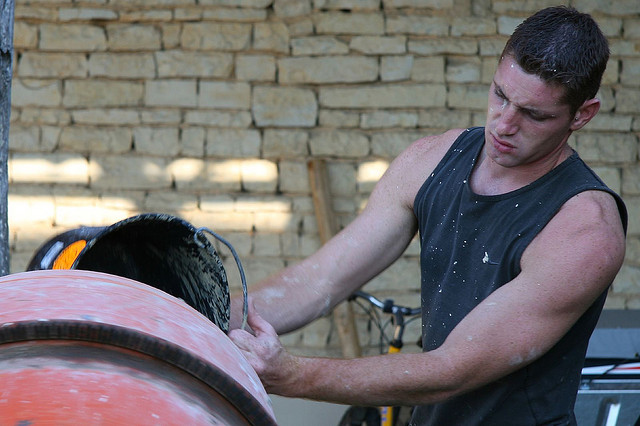Unlock the Magic in Your Story Now
Get the Free 20 questions to Ask Before Launching Your Idea workbook when you sign up for occasional updates.
Get the Free 20 questions to Ask Before Launching Your Idea workbook when you sign up for occasional updates.
Articles filed in: Marketing
The Customer Referral Source Changes The Story
filed in Marketing, Storytelling, Strategy
 Not all prospective customer enquiries are created equal.
Not all prospective customer enquiries are created equal.
An enquiry via website contact form, made as a result of a Google search is very different from a direct referral from a friend. It’s also worth remembering that the customer’s story at the time she seeks you out changes the sales conversation.
How and when a potential customer finds you has a bearing on the story she is ready to hear and the value you can create for her in the moment. It’s just as important to focus on her circumstances and worldview and to allocate resources to that as it is to hone the brand story you want to tell.
Image by Kejing GU.
The Noisy Bell And Napkin Worthiness
filed in Marketing, Storytelling, Strategy
 John Lydgate was right, “you can’t please all of the people all of the time.”
John Lydgate was right, “you can’t please all of the people all of the time.”
And yet a huge part of our job as business leaders, entrepreneurs and product creators is to meet a standard that pleases most of the people we serve, most of the time.
Feedback—the information and reactions we receive about our products or performance is the basis for improvement, but feedback comes in different forms. It’s often what’s unsaid, the complaint that isn’t voiced or the praise that isn’t overt that’s most valuable to our businesses. The clean plate, the return visit, the website address scribbled on a lunch companion’s napkin, leave valuable clues about what’s working and what’s not.
Customer satisfaction and customer support are very different from customer awareness and customer care.
Your business needs both.
You can wear yourself down by constantly reacting to the noisy bell, or you can find more ways to pay attention to the people who think you are napkin-worthy, then work harder to create more of them.
Image by C.Foulger.
How Do You Know?
filed in Marketing, Storytelling, Strategy
 How do you know which product to launch next?
How do you know which product to launch next?
How do you know which packaging works best?
How do you know what it feels like for someone to encounter your brand?
How do you know what story your customer will tell tomorrow about the experience he had today?
What we know (or perhaps don’t yet know), about our customers should be the thing that impacts what we do now and next.
How are you getting better at knowing?
Image by Glen Scott.
A Reputation That Precedes You
filed in Marketing, Storytelling, Strategy
 It’s 5pm, still thirty minutes to go before Mr Wong opens its doors for dinner. The line snakes down the street and around the corner. A few people have bookings for tables of six or more, but not many, most are walk-ins who know that if you’re not dining with a bigger group and have no reservation (house rules), then you need to get there early. Mr Wong’s reputation precedes it.
It’s 5pm, still thirty minutes to go before Mr Wong opens its doors for dinner. The line snakes down the street and around the corner. A few people have bookings for tables of six or more, but not many, most are walk-ins who know that if you’re not dining with a bigger group and have no reservation (house rules), then you need to get there early. Mr Wong’s reputation precedes it.
There is clearly no time for the management to worry about what the dozen other restaurants within walking distance are doing and no urgency to allocate resources to traditional marketing campaigns.
Like the Mr Wong team every one of us has a choice. We can spend the majority of our time either managing our reputation or keeping pace with our competitors or we can deliberately create the reputation that precedes us.
What’s the story you want customers to tell about your brand? [Take time to write it down].
How will you make that happen?
Image by deepstereo.
The Three Marketing Superpowers—Judgement, Empathy And Timing
filed in Marketing, Storytelling, Strategy
 Just two days before Christmas while every other retailer was happily dealing with long lines, the outdoor clothing and travel equipment store was empty. Not a customer in sight. They should have been doing a brisk trade in torches, camping accessories and stocking fillers, yet the assistants had plenty of time to finesse the ‘Boxing Day Sale’ window display. Large red signs announcing that in just three days things might be cheaper filled every window, reminding passers-by about buyer’s remorse right when they were in the mindset to make a purchase.
Just two days before Christmas while every other retailer was happily dealing with long lines, the outdoor clothing and travel equipment store was empty. Not a customer in sight. They should have been doing a brisk trade in torches, camping accessories and stocking fillers, yet the assistants had plenty of time to finesse the ‘Boxing Day Sale’ window display. Large red signs announcing that in just three days things might be cheaper filled every window, reminding passers-by about buyer’s remorse right when they were in the mindset to make a purchase.
This error in judgement, empathy and timing led to a slew of operational decisions, the impact of which couldn’t be undone. The ability to stand in the customer’s shoes and to see the world as they do is the most underrated marketing tool we have.
Image by Gerard Stolk.
When The Marketing Works
filed in Marketing, Storytelling, Strategy
 We spend so much of our time in ‘push mode’ that we can forget to celebrate what went well or to evaluate why. When you make the sale it’s natural to begin working out how to make the next one.
We spend so much of our time in ‘push mode’ that we can forget to celebrate what went well or to evaluate why. When you make the sale it’s natural to begin working out how to make the next one.
We make the next one by working out why we made the first.
It’s important to spend as much time questioning why the story resonated, as you do working out how to tell it.
Image by Baptiste Pond.
What To Question
 The comedian doesn’t think about how he to be funnier, he tries to understand what makes people laugh and why.
The comedian doesn’t think about how he to be funnier, he tries to understand what makes people laugh and why.
The shoe designer doesn’t simply consider what will look good, she obsesses over what will make a woman feel good.
The architect doesn’t just consider the orientation of the building, he cares about how people will go about their day inside it.
What do you spend your days questioning and caring about? Is it the things that truly matter?
Image by Steve Spangler
Double Your Business
 Greg opened his diary and booked the new client in. It was a small electrical job, hardly worth going out of his way for the call out fee of $120—the kind of job that most of his competitors wouldn’t have dreamed of booking this close to Christmas when everyone wanted everything yesterday.
Greg opened his diary and booked the new client in. It was a small electrical job, hardly worth going out of his way for the call out fee of $120—the kind of job that most of his competitors wouldn’t have dreamed of booking this close to Christmas when everyone wanted everything yesterday.
He turned up on time and replaced the power outlet in less that 20 minutes. The call out fee was secured in a third of the time allocated and Greg could have been on his way, his competitors would certainly have made use of those extra forty minutes that he now had up his sleeve, not Greg.
He stayed to chat to the customer, getting to know him, admiring the space and the decor and suggesting ways that the lighting could be improved in ways that would save electricity and enhance the appearance and functionality of the room. Before the hour was up without pushing or coercion Greg had secured this second job that was worth ten times the initial call out charge. He would be back to fit the new lights in January.
We spend a lot of time trying to work out how to get people to notice us. It turns out that we have a far greater chance of success when we notice them first. If you want to double your business try doubling your service. Opportunities for growth might be closer than you think.
Image by compacflt.
 It’s never a good sign when a flight doesn’t board on time. When the ground staff make announcements about ‘engineering faults’ and begin handing out meal vouchers you know you’re in trouble. And so it went last month for flight 029 to Hong Kong. Three hours after the first announcement the flight was cancelled, leaving the ground staff with five hundred customer service issues to deal with in one hit. No wonder few airlines do this well.
It’s never a good sign when a flight doesn’t board on time. When the ground staff make announcements about ‘engineering faults’ and begin handing out meal vouchers you know you’re in trouble. And so it went last month for flight 029 to Hong Kong. Three hours after the first announcement the flight was cancelled, leaving the ground staff with five hundred customer service issues to deal with in one hit. No wonder few airlines do this well. Joe was in a real fix. The equipment he’d been scheduled to hire from the builder’s supplier had accidentally been hired to another customer, there wasn’t an alternative machine available for a month. Joe needed to do something fast, if he didn’t the job he was working on would be behind time by weeks and this delay would have a knock on effect on the whole project, impacting not just him, but other tradespeople and most importantly his client.
Joe was in a real fix. The equipment he’d been scheduled to hire from the builder’s supplier had accidentally been hired to another customer, there wasn’t an alternative machine available for a month. Joe needed to do something fast, if he didn’t the job he was working on would be behind time by weeks and this delay would have a knock on effect on the whole project, impacting not just him, but other tradespeople and most importantly his client.